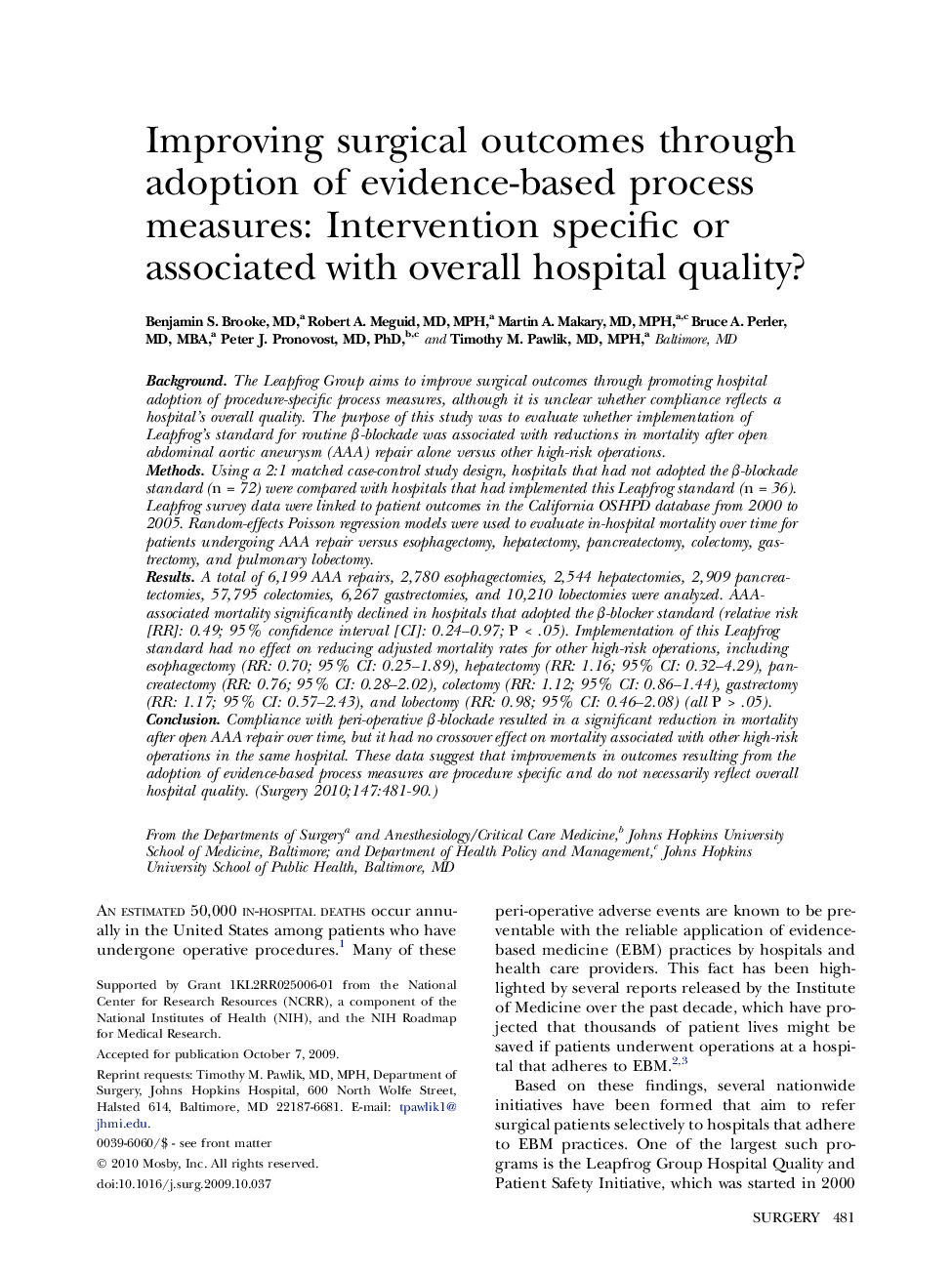| Article ID | Journal | Published Year | Pages | File Type |
|---|---|---|---|---|
| 4308855 | Surgery | 2010 | 10 Pages |
BackgroundThe Leapfrog Group aims to improve surgical outcomes through promoting hospital adoption of procedure-specific process measures, although it is unclear whether compliance reflects a hospital's overall quality. The purpose of this study was to evaluate whether implementation of Leapfrog's standard for routine β-blockade was associated with reductions in mortality after open abdominal aortic aneurysm (AAA) repair alone versus other high-risk operations.MethodsUsing a 2:1 matched case-control study design, hospitals that had not adopted the β-blockade standard (n = 72) were compared with hospitals that had implemented this Leapfrog standard (n = 36). Leapfrog survey data were linked to patient outcomes in the California OSHPD database from 2000 to 2005. Random-effects Poisson regression models were used to evaluate in-hospital mortality over time for patients undergoing AAA repair versus esophagectomy, hepatectomy, pancreatectomy, colectomy, gastrectomy, and pulmonary lobectomy.ResultsA total of 6,199 AAA repairs, 2,780 esophagectomies, 2,544 hepatectomies, 2,909 pancreatectomies, 57,795 colectomies, 6,267 gastrectomies, and 10,210 lobectomies were analyzed. AAA-associated mortality significantly declined in hospitals that adopted the β-blocker standard (relative risk [RR]: 0.49; 95% confidence interval [CI]: 0.24–0.97; P < .05). Implementation of this Leapfrog standard had no effect on reducing adjusted mortality rates for other high-risk operations, including esophagectomy (RR: 0.70; 95% CI: 0.25–1.89), hepatectomy (RR: 1.16; 95% CI: 0.32–4.29), pancreatectomy (RR: 0.76; 95% CI: 0.28–2.02), colectomy (RR: 1.12; 95% CI: 0.86–1.44), gastrectomy (RR: 1.17; 95% CI: 0.57–2.43), and lobectomy (RR: 0.98; 95% CI: 0.46–2.08) (all P > .05).ConclusionCompliance with peri-operative β-blockade resulted in a significant reduction in mortality after open AAA repair over time, but it had no crossover effect on mortality associated with other high-risk operations in the same hospital. These data suggest that improvements in outcomes resulting from the adoption of evidence-based process measures are procedure specific and do not necessarily reflect overall hospital quality.
